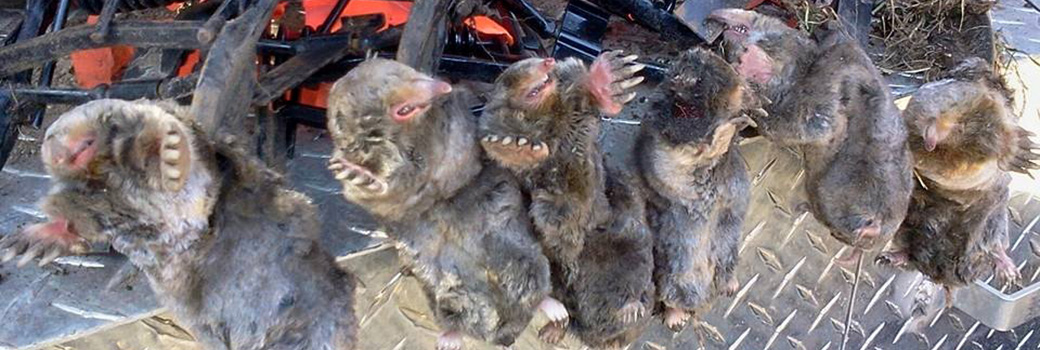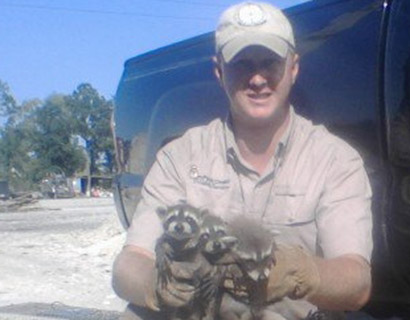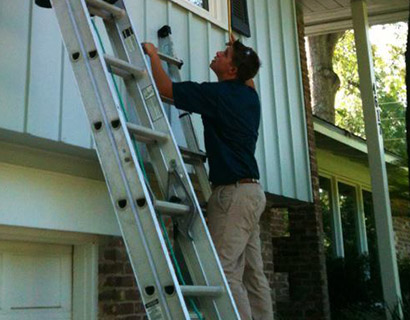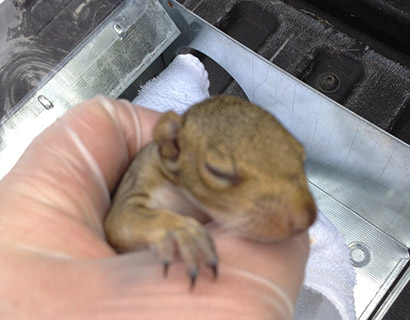- How We Solve Pennsylvania Wildlife Problems
How We Solve Philadelphia Wildlife Problems
INSPECTION: Once on site, we will perform a full inspection of your home and property. This allows us to use the correct strategy and traps. If the animals are in an attic, a full building inspection is crucial, including the following:
- All ground-level areas, such as piper or A/C line entry & exit areas, A/C chase bottoms, ground-level vents, etc.
- All mid-level areas, such as dryer vents, siding gaps, first floor eaves or dormers, etc.
- We inspect the entire roof, including all plumbing stacks, ridge caps, vents, and other potential gaps or holes.
- We also inspect inside your attic, to identify animals and damage they have caused.
- If the animals are outside, we notice many subtle clues that will assist us in a successful strategy.
TRAPPING, EXCLUSION, REMOVAL: Once we understand what animal species we are dealing with, and the problem, we use the most effective means of removing the animals. We use dozens of different types of traps.
- Trapping - If trapping the animal(s) in live cage traps, trap type, set, and location are crucial to success.
- Exclusion - Oftentimes, we are able to simply set one-way doors or other exclusion devices that allow the animals inside a building to safely exit, but never get back inside.
- Removal By Hand - Sometimes we actually remove animals by hand, or with special tools like snare poles.
- The Law - In all cases, we obey state and local laws regarding wildlife, but aim to take the most humane approach.
ENTRY HOLE REPAIRS: Repairs are a crucial step in the wildlife removal process. In many cases, such as bat or rodent control, the job cannot be performed without detailed repairs, and in all cases, sealing the entry holes shut ensures that no future wildlife will ever enter your home.
- 100% of the entry holes must be found, and sealed shut, or the job is not complete.
- Our repairs are professional contractor grade, look good, and when applicable we use steel, which rodents such as rats or squirrels are unable to chew through.
- We give a written guarantee on our repairs against any future animal entry.
ATTIC DECONTAMINATION SERVICES: It may be desirable to clean your attic after we've removed the animals. They can leave behind large amounts of droppings, urine, hair, oils, food, nesting material, and so on. These remnants can attract insects like cockroaches, and the scent left behind can encourage new animals to chew their way into your house. You might experience odor problems from the waste. It's possible that mold will grow on waste areas.
- We remove or vacuum all droppings, or remove all the soiled insulation.
- We fog the attic with a special enzyme-based cleaner that destroys any organic matter and deodorizes the space.
- We repair damage, such as ductwork, electrical wires, pipes, insulation, and more.
We pride ourselves on both our professionalism with customers and our humane treatment of wild animals in Pennsylvania. We specialize in removal of animals inside houses in the Philly area, including raccoons and squirrels. We prefer not to handle rat problems. Birds that are living in your attic can be a serious problem. Not only are they noisy, they are living rent free and putting your family at risk. Bird droppings carry bacteria that can cause illnesses. Our team answers our phones 24 hours a day, 7 days a week to keep your home and your family safe from any and all of Philadelphia's wildlife. We proudly service the following cities: Wayne, Upper Darby, Springfield, Media, Camden, Bala Cynwyd, Abbington, Cherry Hill, Norristown, Pottstown, King of Prussia, Lansdale, Willow Grove, Horsham, Montgomeryville, Ardmore, Harleysville, Audubon, Glenside, Sanatoga, Kulpsville, Conshohocken, Hatboro, Maple Glen, Souderton, Ambler, Plymouth Meeting, Blue Bell, Trooper, Collegeville, Levittown, Croydon, Morrisville, Perkasie, Doylestown, Richboro, Telford, Sellersville, Bristol, Whitehall, Germantown, Chester, and Drexel Hill. We also service the following counties: Bucks County, Burlington County, Camden County, Gloucester County, Delaware County, and Montgomery County.
Other Philadelphia animal pest control topics:
How to Get Rid of Moles
How to Kill a Pigeon
Information About Coyotes
How to Remove Animal Waste
To learn more about our services, visit the Philadelphia wildlife control home page.
This month's wildlife how-to article: How To Kill A Mole
How To Kill A Mole
Moles are secretive animals that spend most of its lifespan underground and are rarely seen. They are pretty harmless mammals which mostly feed on worms and grubs. Moles are mostly found in moist and loose soil so they prefer well watered lawn or garden. The most effective method to get rid of mole is to kill them by setting traps or by poisoning them. The best time to set traps is during spring and fall when the ground is not frozen but has the moisture which attracts worms and grubs and it becomes a breeding ground for moles.

All traps are not lethal like the live trap however certain traps are lethal killing the animal. Before setting up a trap we must make sure that it is an active tunnel. They dig tunnel with much precision, where they keep the loose dirt above the ground and underneath the loose soil we find a deep hollow tunnel and traps are set inside these hollow tunnels. Traps are easy to set by following manufacturer’s instruction and they are cheaper as it can be reused.
Clip Trap
The trap which is set down inside a tunnel back to back and each facing outward is called a Clip Trap. Mole coming from any direction crawling through the tunnel will hit the pin that hold to open the clip trap. This will cause the pin to slide and trap the mole and eventually killing the mole.
Scissor trap
Other common lethal trap used is a scissor trap, which looks like a scissor and the setup is done inside an active tunnel. These traps are spring based so once the sensor detects a pressure it collapses with the mole inside it. The traps could be used using a bait also like worms, etc. to lure them into it.
Poison
Poisoning these critters is also a way however as they usually stay underground it becomes difficult. Bromethalin and Warfarin are the two chemically prepared most effective poison solutions available in the market. These chemicals have the strong scent of their favorite food that is worms, which attracts them towards it easily. Just spread these inside the active tunnels or identified runways in your yard which they use. These solutions result in internal bleeding and kill them within two days so searching and disposing the corpse becomes an issue. Corpses may get contaminated and result biohazards or other pets or other invaders could be attracted towards your yard.





